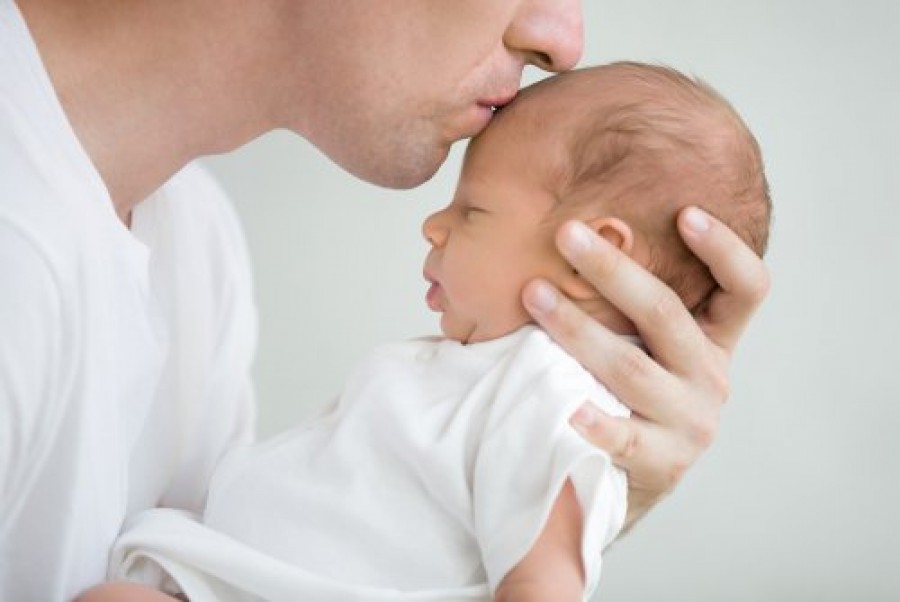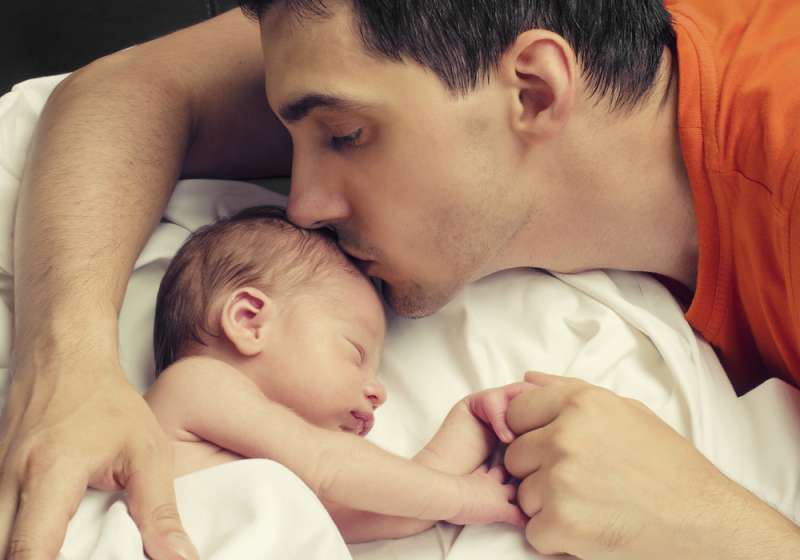Learning Neck and Head Control

When your baby is a newborn, they have very little neck control and are unable to support their own head, so it’s very important to make sure you support them properly when holding them. Some babies are curious straight away and will want to look around at everything. Others may be more restful and let their mobility in this area develop more naturally over time.
Before any other significant movement milestones, gaining neck and head control needs to be achieved by your baby. It’s a really important development stage, and is the starting point of many other development milestones – sitting up, crawling and walking!
How should I hold my baby to support their neck and head?
Before your baby develops the ability to hold up their own head and support their neck, it is very important that you support their head with your hands, and hold them correctly.
The best way to support your newborn baby’s head is to gently cradle your baby’s head in your hand while holding them, or to make sure your baby’s head is supported by your arm when holding them, if you are sitting down. When lifting your baby, always make sure you have a hand behind their head, cupping and supporting the weight of their head before you lift them up.
Making sure you correctly carry and hold your baby is important at these early stages to prevent injury and harm to your baby including suffocation, brain damage and severe neck or spinal injury.

When will my baby start supporting their own head?
This is one of the first movement milestones you will see your baby achieve, and normally happens relatively quickly. By about 3 months babies will have developed sturdier neck muscles, and be looking around their environment and looking for you more. It can take babies up to 6 months to fully develop the muscles and control of these muscles to hold their head upright unsupported on their own, and move their head around.
As with all the other development milestones, every baby can be slightly different and it’s important not to compare too much with other mothers and babies, and to let your baby develop at their own pace.
What are the stages of my baby developing their neck and head control?
There are different signs to look out for, that will let you know your baby is developing their neck and head control:
1. Newborn
As mentioned above, when your baby is a newborn (0-1 months) they have very weak weak muscles and are not capable of supporting their own head. It’s important to make sure you support their head while holding them.
2. One-Two Months
After about a month you will notice that your baby’s neck muscles are starting to strengthen and your baby will start looking around their environment, and looking for you when they hear your voice, especially when lying on their tummy. By two months, your baby may even be strong enough to lift their head a little when laying on their back. At two months they may also try and lift their head and look around when you are carrying them upright against your shoulder.
3. Three-Four Months
It’s around this time that you’ll probably notice a big jump in your babies neck control and their ability to hold their head up. You’ll notice that your baby has improved neck control and is very comfortable lifting their head for prolonged amounts of time while lying on their stomach.
4. Five-Six Months
By six months your baby should have good control of their neck muscles and be comfortable holding their head upright and supporting themselves to look around their environment. You’ll notice that your baby is no longer wobbly when trying to control and move their head and they will have much steadier control when looking around.

How can I help my baby learn to sit on their own?
Babies are naturally very curious so you probably won’t have to do too much to encourage them to start looking around and developing their neck and head control!
As discussed, it’s important to let your baby develop naturally and find their own way when developing as this will encourage them to keep progressing through their development milestones. A couple of things you can do to help support your baby’s development with their neck control include:
1. Plenty of Tummy Time
It can’t be stressed enough how crucial tummy time is for your babies mobility development. Plenty of tummy time encourages their development in all sorts of ways – strengthening their torso, legs, back and arm muscles – as well as those neck muscles! When starting with tummy time make sure your baby is comfortable and safe, and if they’re not keen, try different pillows and toys to help soothe and encourage them.
2. Try a few games
Something to try when your baby is around the 4 -5 month mark to help develop their neck muscles is to place your baby on their back and to then gently and slowly pull them up into a sitting position by their arms. Gently lower your baby back down and repeat – try making silly faces at your baby as you do this to it fun. At this age they should be able to hold their head in time with their body as you lift and lower them.
3. Encourage and Support them
Smile and verbally encourage your baby! This support from you can really help them to keep progressing with their development.

What should I do if my baby doesn’t start to lift their head on their own?
All babies develop differently; the main thing is to make sure your baby is alert, curious and attempting to move in new ways.
When it comes to developing their neck and head control, babies tend to respond quick well to their environments. For babies who have older siblings, you might find they develop their neck muscles quite quickly, as they try to look around and keep up with their siblings. Babies, who are born prematurely, may take longer to develop – and this is all perfectly natural.
If by three months, your baby has not attempted to start moving their head and controlling their neck muscles, or they seem to particularly struggling, make sure you speak with your doctor or midwife who can reassure you and carry out extra tests if needed.
Baby Developmental Milestones
Learning: Head & Neck Control
Learning: to Roll Over
Learning: to Sit
Learning: to crawl
Learning: to walk
How your baby’s eyesight develops
How your baby’s hearing develops
How your baby’s brain develop
Help your baby learn to talk



